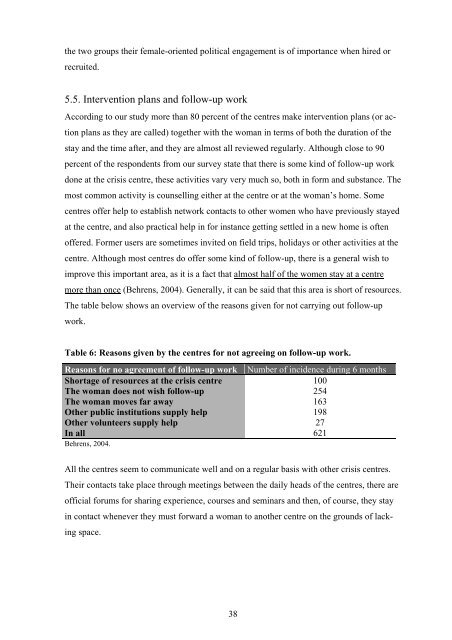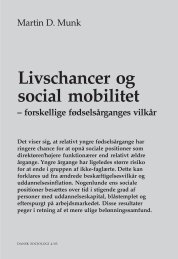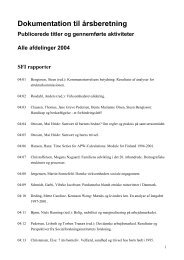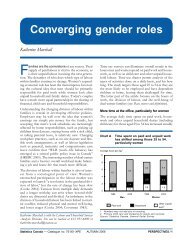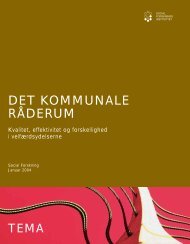Shelters in Denmark For Battered Women - European Commission
Shelters in Denmark For Battered Women - European Commission
Shelters in Denmark For Battered Women - European Commission
You also want an ePaper? Increase the reach of your titles
YUMPU automatically turns print PDFs into web optimized ePapers that Google loves.
the two groups their female-oriented political engagement is of importance when hired or<br />
recruited.<br />
5.5. Intervention plans and follow-up work<br />
Accord<strong>in</strong>g to our study more than 80 percent of the centres make <strong>in</strong>tervention plans (or action<br />
plans as they are called) together with the woman <strong>in</strong> terms of both the duration of the<br />
stay and the time after, and they are almost all reviewed regularly. Although close to 90<br />
percent of the respondents from our survey state that there is some k<strong>in</strong>d of follow-up work<br />
done at the crisis centre, these activities vary very much so, both <strong>in</strong> form and substance. The<br />
most common activity is counsell<strong>in</strong>g either at the centre or at the woman’s home. Some<br />
centres offer help to establish network contacts to other women who have previously stayed<br />
at the centre, and also practical help <strong>in</strong> for <strong>in</strong>stance gett<strong>in</strong>g settled <strong>in</strong> a new home is often<br />
offered. <strong>For</strong>mer users are sometimes <strong>in</strong>vited on field trips, holidays or other activities at the<br />
centre. Although most centres do offer some k<strong>in</strong>d of follow-up, there is a general wish to<br />
improve this important area, as it is a fact that almost half of the women stay at a centre<br />
more than once (Behrens, 2004). Generally, it can be said that this area is short of resources.<br />
The table below shows an overview of the reasons given for not carry<strong>in</strong>g out follow-up<br />
work.<br />
Table 6: Reasons given by the centres for not agree<strong>in</strong>g on follow-up work.<br />
Reasons for no agreement of follow-up work Number of <strong>in</strong>cidence dur<strong>in</strong>g 6 months<br />
Shortage of resources at the crisis centre 100<br />
The woman does not wish follow-up 254<br />
The woman moves far away 163<br />
Other public <strong>in</strong>stitutions supply help 198<br />
Other volunteers supply help 27<br />
In all 621<br />
Behrens, 2004.<br />
All the centres seem to communicate well and on a regular basis with other crisis centres.<br />
Their contacts take place through meet<strong>in</strong>gs between the daily heads of the centres, there are<br />
official forums for shar<strong>in</strong>g experience, courses and sem<strong>in</strong>ars and then, of course, they stay<br />
<strong>in</strong> contact whenever they must forward a woman to another centre on the grounds of lack<strong>in</strong>g<br />
space.<br />
38


